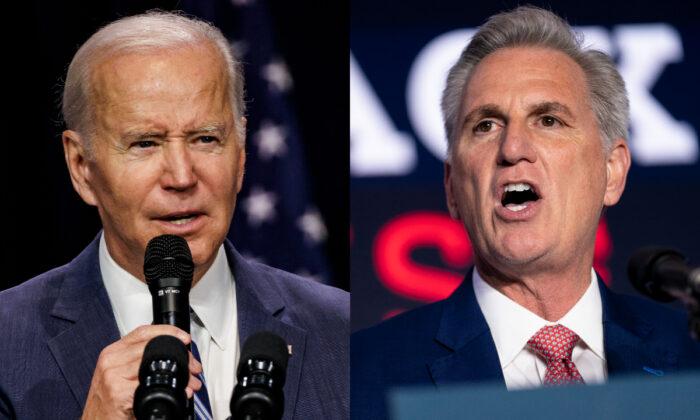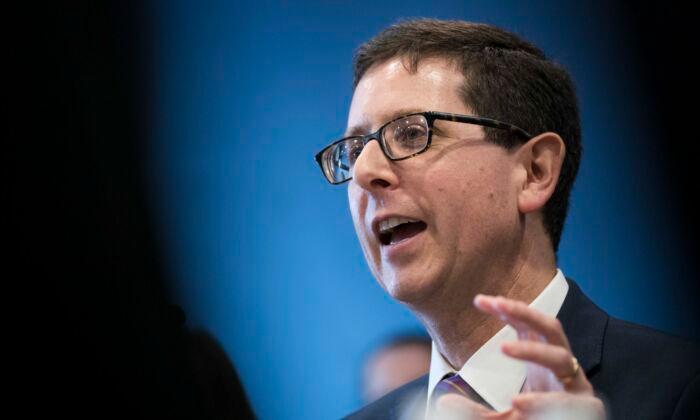Reducing deficit spending by 50 percent, measured as a percentage of the nation’s gross domestic product (GDP), would stop the growth of the national debt in 10 years, says Phillip Swagel, director of the Congressional Budget Office (CBO).
GDP is the total market value of all finished goods and services produced in the country. The deficit is the difference between what the government receives through taxes and what it spends.
Right now, the country’s annual spending deficit equals 3 percent of GDP, not including interest payments on the national debt.
Reducing the deficit to its historical level of 1.5 percent of GDP would “stabilize” the debt in 10 years, Swagel said in a March 6 statement, meaning that the debt, measured as a percentage of GDP, would stop growing.
That would require a cumulative spending reduction of $5 trillion over the next decade, Swagel said.

However, if federal spending patterns continue unabated, the debt will grow from 98 percent of GDP at the end of 2023 to 118 percent at the end of 2033, Swagel said.
In total, the 17 spending cuts would yield savings of $9.1 to $17.6 trillion over 10 years, according to the CBO. However, any combination of cuts totaling $500 billion annually would achieve the stabilizing effect.
Swagel said he is not recommending a reduction of deficit spending, which is a policy decision for Congress. The CBO report was provided to show the possible effect of such a decision on the national debt.
House Speaker Kevin McCarthy (R-Calif.) and President Joe Biden are in negotiations over raising the debt ceiling.
Biden has said that he expects Congress to pass a “clean” increase to the debt ceiling in order to protect the full faith and credit of the United States.
McCarthy has said there will be no default on U.S. debt, but he will insist on a “responsible” increase to the debt limit, accompanied by spending concessions.
The limit is currently $31.4 trillion, which would have been reached on Jan. 19 if U.S. Treasury hadn’t taken “extraordinary measures” to delay it. Those measures will be exhausted sometime between July and September, the CBO estimates.
No further meetings between McCarthy and Biden are currently scheduled, a White House spokesperson said on March 6.
The president is expected to reveal his proposed 2024 budget on March 9.





